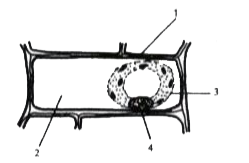Passage of water across a selectively permeable membrane is
Active transport
Pinocytosis
Facilitated diffusion
Osmosis.
The correct Answer is:D
Step by step video & image solution for Passage of water across a selectively permeable membrane is by Biology experts to help you in doubts & scoring excellent marks in Class 12 exams.
Updated on:21/07/2023Topper's Solved these Questions
- TRANSPORT IN PLANTSBOOK - DINESH PUBLICATION ENGLISHCHAPTER - TRANSPORT IN PLANTSEXERCISE - REVISION QUESTIONS FROM COMPETITIVE EXAMS
425 Videos
- TRANSPORT IN PLANTSBOOK - DINESH PUBLICATION ENGLISHCHAPTER - TRANSPORT IN PLANTSEXERCISE - CHECK YOUR GRASP
40 Videos
- THE LIVING WORLDBOOK - DINESH PUBLICATION ENGLISHCHAPTER - THE LIVING WORLDEXERCISE - Check your grasp
12 Videos
- VERTEBRATA-AGNATHA AND PISCESBOOK - DINESH PUBLICATION ENGLISHCHAPTER - VERTEBRATA-AGNATHA AND PISCESEXERCISE - Check Your Grasp
12 Videos
Similar Questions
Knowledge Check
An example of selectively permeable membrane is:
AplasmalemmaBcell wallCchloroplast membraneDmitochondrial membrane
The tendency of a solution to take up water when separated from pure water by a selectively permeable membrane is called the ................ of the solution
View SolutionThe selectively permeable membrane of the cell is
View SolutionPassage of water through a semipermeable membrane causes
(a) Suction pressure
(b) Osmotic pressure
(c) Turgor pressure
(d) Wall Pressure
View SolutionOsmosis is the passage of water through a semipermeable membrane from
View SolutionThe diagram given below represents a plant cell after being placed in a strong sugar solution . Study the diagram and answer the questions that follow:

Name the structure that acts as a selectively permeable membrane.
View Solutiondiffusion of water across a differentially or semi-permeable membrane is known as
View SolutionConsider the following statements
Osmosis is a process of transport of water across a semipermeable membrane ,
1. Down the water potential gradient .
2. Up the water potential gradient .
3. Actively
4. Passively
Of these statements
View Solution
